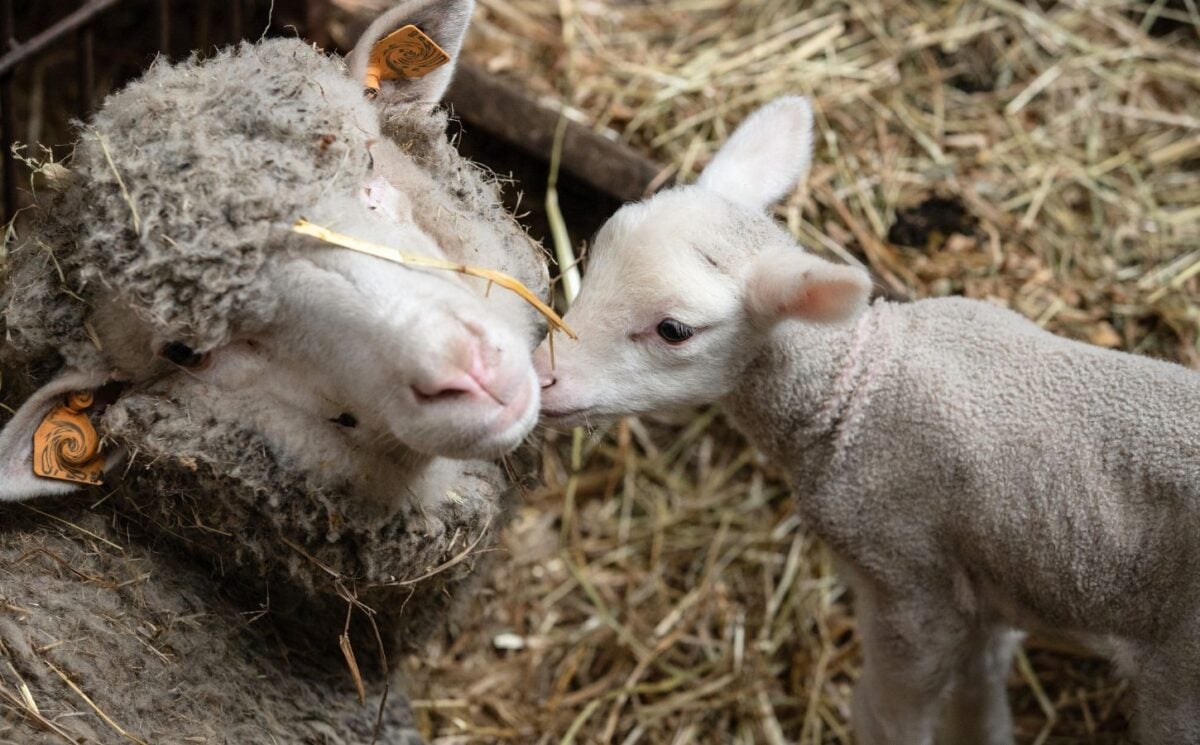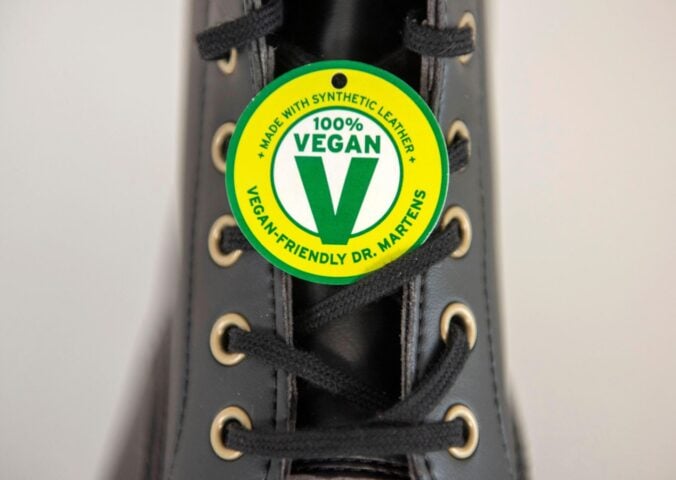Wool is marketed as a sustainable and ethical choice of material for clothing, bedding, and even home insulation. Since sheep do not need to be killed to be sheared, wool might at first seem like a safe option for vegans. But is this true?
As it’s a product of animal exploitation, buying, wearing, or otherwise utilizing wool is not compatible with a vegan lifestyle. Veganism is a movement against animal exploitation and all industries that use them as commodities.
Wool production also comes with its own specific ethical costs, and many deem its production to be cruel. As well as causing direct harm to sheep, wool production is bound up with meat production and is far from the harmless industry we’re often told it is.
Here’s everything you need to know about sheep farming, wool production, and why the material isn’t vegan-friendly.
How are sheep farmed for wool?
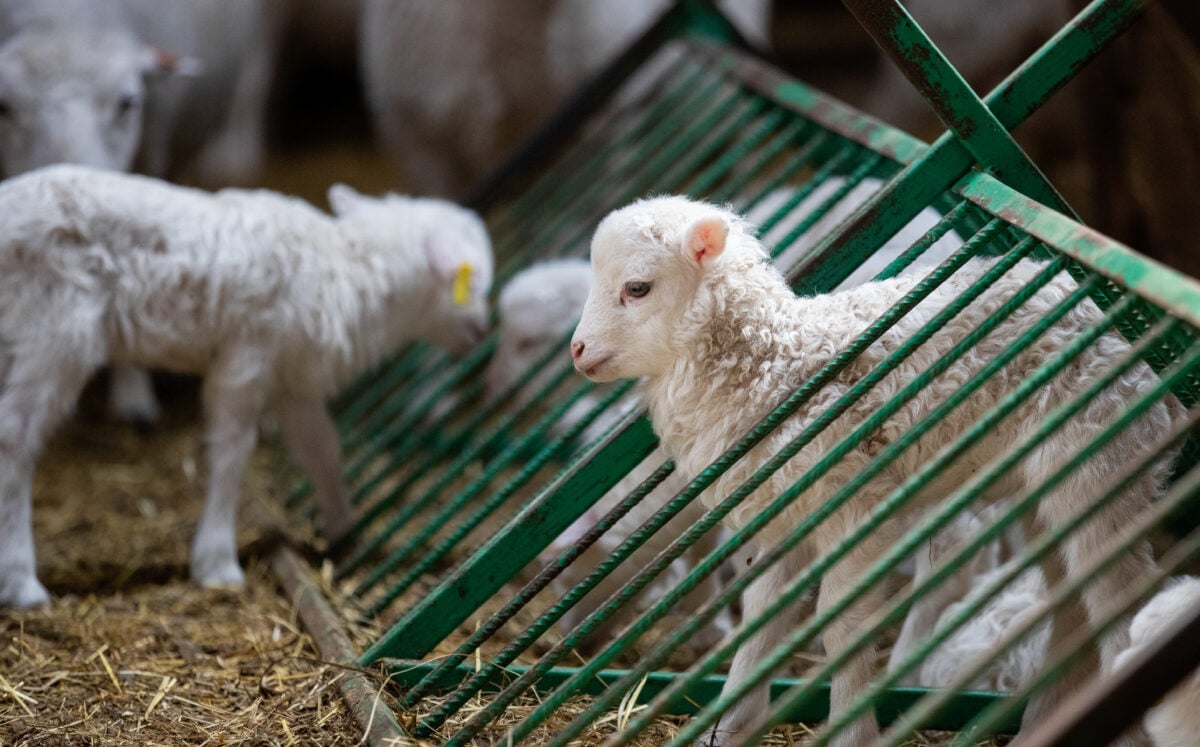
There are around one billion sheep in the world, with the majority farmed in Asia and Africa. China, Australia, and New Zealand are the top three wool producers in the world. The UK comes in at number five, with an estimated 500,000 wool-shedding breeding ewes among the national 14.5 million-strong breeding flock.
Unlike many farmed animals, sheep generally spend most of their lives grazing on pastures. But their welfare is still often compromised. Exposed to the elements, vulnerable lambs can die from hypothermia in winter and sheep can suffer from heat stress and dehydration in summer, particularly as extreme weather events become more common.
Though extensive grazing systems means sheep have more freedom to express natural behaviors than confined animals, some of these are nonetheless disrupted and curtailed. Farmers forcibly wean lambs several months earlier than they would naturally. They may also segregate sheep based on age, sex, and for the purposes of carrying out various farming tasks, which can cause stress.
Routine mutilations
Mutilations are also common in sheep farming. Docking lambs’ tails using a knife, a hot iron, or a tight ring around the tail is routine and often done without pain relief. Removing the tail is meant to stop the fleece around the tail from being soiled by feces and reduce the risk of flies laying eggs in the animals’ rear ends, known as “fly strike.” There is doubt that tail docking, a painful procedure causing chronic discomfort in lambs, achieves its intended aims.
In Australia, where merino sheep are the main type farmed for their wool, mulesing is a common practice. It involves cutting flesh away from a lamb’s hindquarters to stop feces and urine collecting in the folds of skin there.
Castration of lambs is another routine mutilation, performed using a tight rubber ring, clamp, or surgery. It is meant to prevent unwanted breeding and thought to make them easier to handle when they are bigger.
Wool involves slaughter
In some countries, such as the UK, wool is a by-product of the meat industry since it has limited economic value. In other countries with significant farmed sheep populations, such as New Zealand and Australia, sheep are considered “dual-purpose,” farmed for both their wool and meat. All end up in a slaughterhouse.
In wool and meat systems, some lambs are slaughtered for meat between the ages of six to nine months old. They might be shorn beforehand, or left with their fleece if it’s in good condition to increase the value of their skin after they are killed.
Others will be a bit older before being shorn and killed. Sheep with high quality wool will be kept alive until they are five or six years old, at which point they are sent to slaughter. Some will be exported live in long, grueling journeys to be slaughtered in other countries.
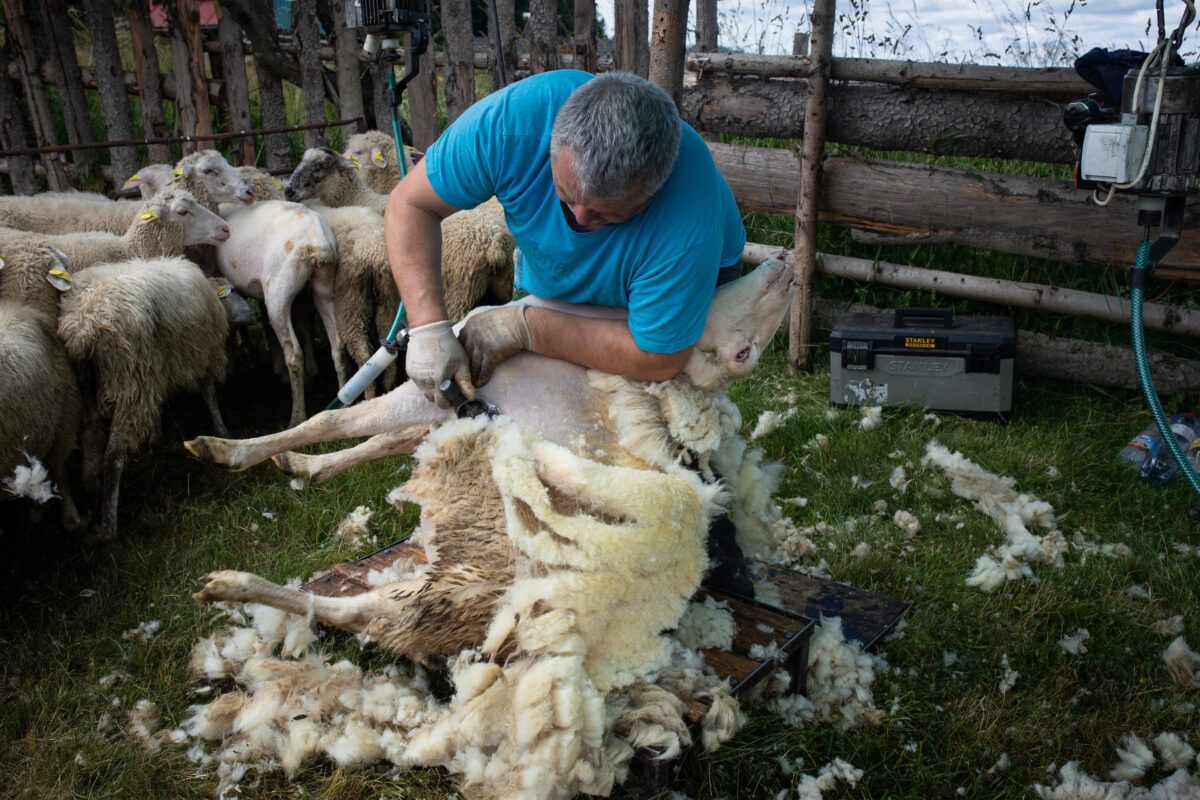
Is wool cruel? Does shearing hurt sheep?
In the wild, sheep naturally shed their winter coats by scratching their bodies against trees to rub away excess fluff. Selective breeding has made domesticated sheep produce larger fleeces which become hot and uncomfortable without shearing. They are shorn at least once a year – a process which can cause significant stress and pain.
As prey animals, sheep are skittish and don’t like being handled. They are forcibly restrained during shearing. Shearers are often not required to have formal training and injuries to panicked sheep are not uncommon. Sheep will also be handled multiple times during the process and have their water and feed restricted beforehand to prevent them soiling the shearing shed.
Undercover footage taken by PETA has revealed sheep being roughly handled and violently abused in shearing sheds across the world, including the UK.
Can you buy ethical wool?
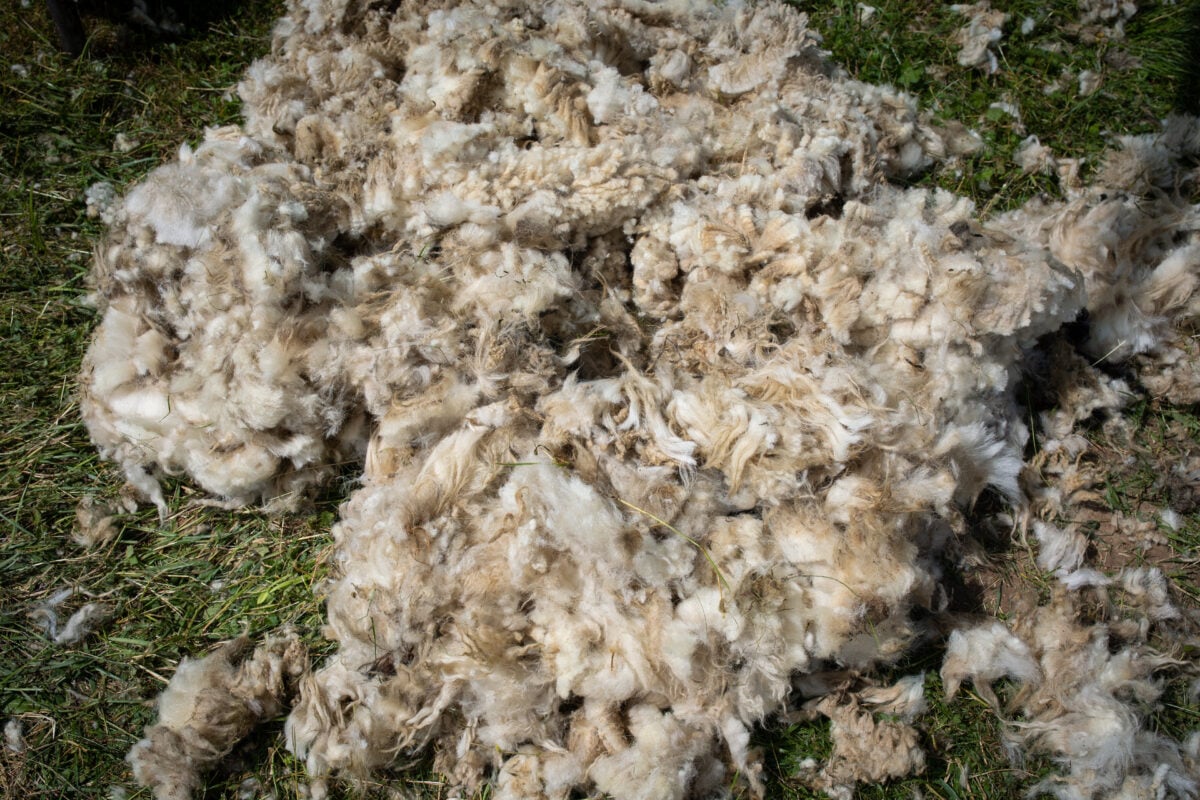
Some retailers refuse to buy wool from suppliers that engage in the worst kinds of husbandry practices, namely mulesing which is common in Australia. Consumers may believe that mulesing-free wool is the most ethical choice. Guides and standards such as Humane Society’s Better Wool Guide and the Responsible Wool Standard encourage this idea, even though other welfare issues in the wool industry are likely to remain.
In addition, the standards and certification schemes that exist for wool do not prohibit the slaughter of sheep.
But even wool from farms with the best “welfare” standards will not be vegan, or considered by many to be ethical, as the sheep are still being exploited.
Sheep who have been rescued from the industry will still need to be shorn, due to the dependence they have on humans for removing their fleece that has been bred into them. But this wool wouldn’t be useful to make into clothes since wool requires extensive chemical treatment that has serious environmental impacts before it can be turned into yarn.
Vegan alternatives to wool
If you want to avoid wool, you needn’t turn to synthetic fossil fuel-based fibers which shed harmful microplastics. There are a number of vegan fabrics that can ensure consumers are not contributing to the suffering or slaughter of sheep. Meanwhile, PETA launched a competition with a USD $1 million reward to develop a vegan material that mimics the qualities of wool. The competition recently closed, with the winner yet to be announced.
Existing options include:
1. Tencel
Also known as Lyocell, this fabric is made from wood cellulose. Tencel, which can be used for tops, jumpsuits, trousers and dresses, is produced using a closed-loop technology, which means that the water and chemicals are re-used.
2. Hemp
This natural, biodegradable material is often used in blended fabrics and doesn’t require any pesticides to grow, which makes it ideal for organic farming. It’s also very breathable and doesn’t trap heat like wool does, which can support the growth of bacteria.
3. Organic cotton
When it comes to eco-friendly cotton, organic farming can make all the difference. Choose organic and Fair Trade cotton to be sure that you’re getting the best product you can.
See here for our full list of more sustainable vegan fabrics.
